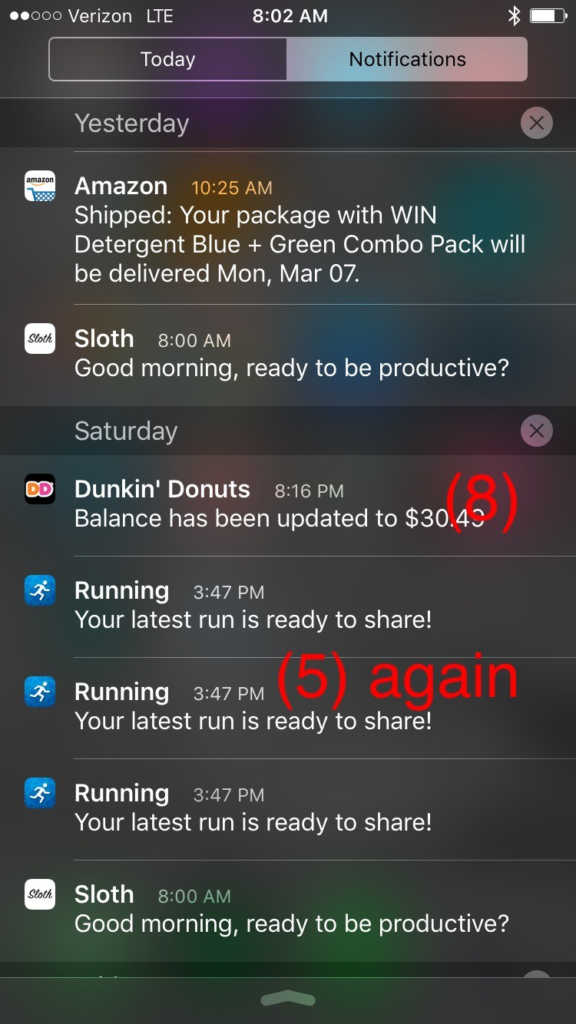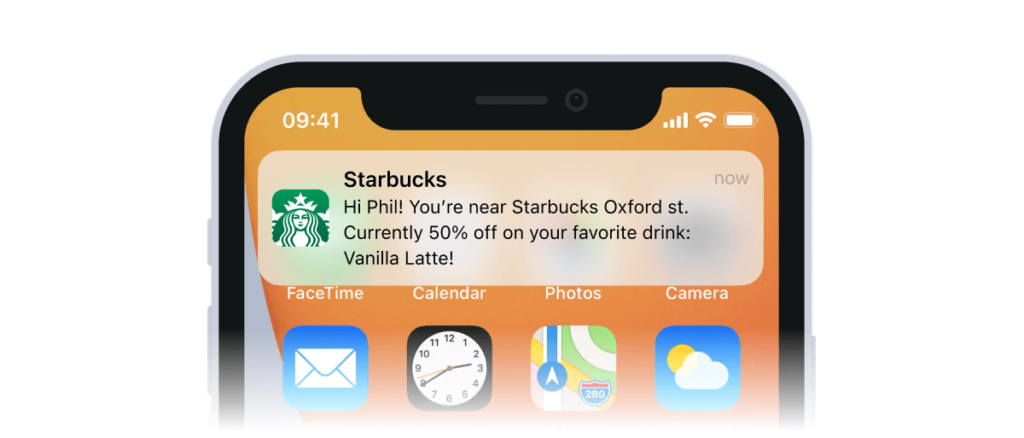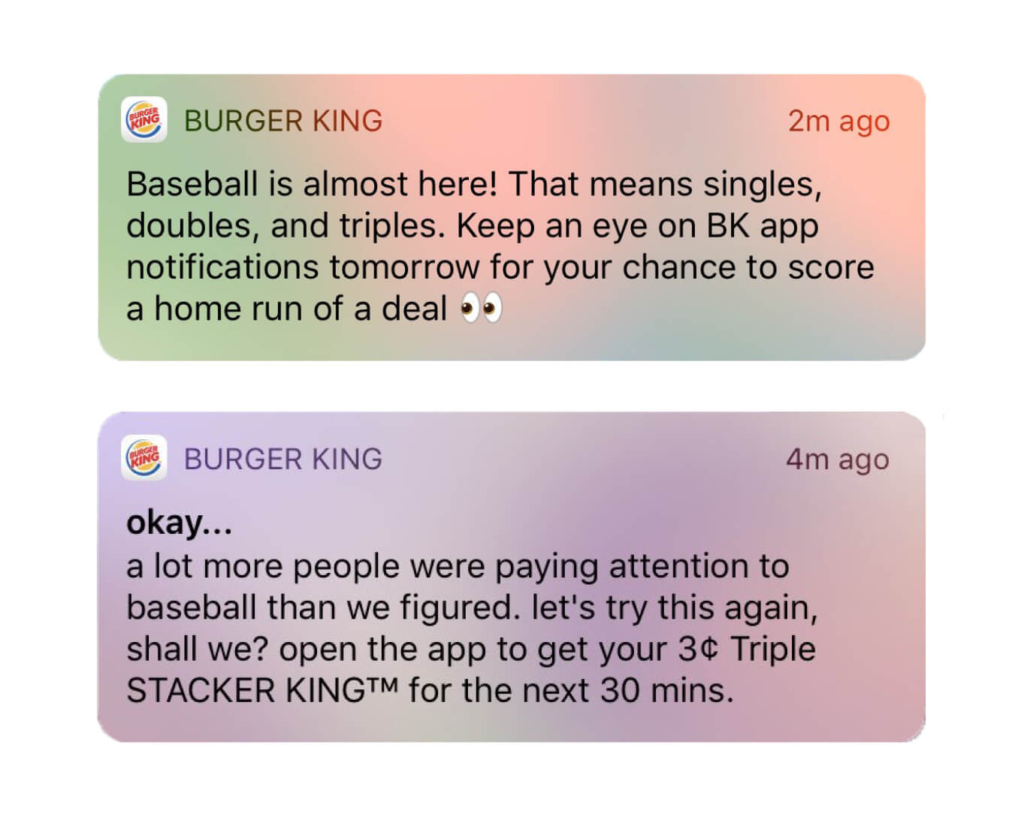Boosting User Engagement with the Power of Push Notifications
You might see, when you’re using your phone, a quick message pops up from an app. That’s a push notification! These little messages seem simple, but they’re actually the best way for businesses and apps to stay connected with you.
Push notifications aren’t just about reminding you an app exists. They can offer you a discount code right when you need it, tell you about breaking news that matters to you, or even let you know when your favorite team scores. When used correctly, push notifications are like a friendly tap on the shoulder — guiding you back to an app you enjoy and making sure you don’t miss out on anything important.
In this blog post, we’ll talk about what makes push notifications tick — the different types, how they work, and why they’re important. We’ll also share proven strategies that businesses and app developers use to make these notifications engaging and valuable for you.
First Off, Let’s Talk About Push Notification Types
Push notifications have many types — each serving a unique purpose to enhance user engagement. Let’s take a closer look at the main types.
Transactional Push Notifications
Robbin Schuchmann, Co-Founder of Employ Borderless, said, “These are the workhorses of the notification world. They deliver essential updates related to user actions or transactions.
Like, when you order a pizza from your favorite app. A push notification pops up to confirm your order, provide an estimated delivery time, or let you know when your driver is nearby.”
And here, Amazon excels at transactional notifications.

Image Source: LinkedIn
They send timely updates about order confirmations, shipment tracking, and delivery status, keeping customers informed and reducing anxiety.
Promotional Push Notifications
These are designed to entice users with offers, deals, and new products or services. Like, your favorite clothing store sends you a push notification about a flash sale with 20% off everything for the next 24 hours.
Let’s take an example of Starbucks.

Image Source: nGrow AI
They frequently use promotional notifications to announce new drinks, limited-time offers, or bonus rewards for loyalty program members.
Informational Push Notifications
These deliver valuable news, updates, or personalized recommendations to users. Like, a news app sends you a breaking news alert about a major event happening in your city.
Geo-Targeted Push Notifications
These leverage a user’s location to deliver highly relevant offers or information. Like, you walk by a coffee shop, and your phone buzzes with a notification offering you a discount on your next latte.
Let’s take an example of Burger King.

Image Source: AppFollow
They ran a campaign where users could get a 1-cent Whopper if they ordered within 600 feet of a McDonald’s, showcasing the power of geo-targeting to disrupt competitors.
Abandoned Cart Push Notifications
These specifically target users who added items to their cart but didn’t complete the purchase. Like, you leave a pair of shoes in your online shopping cart, and later receive a notification reminding you about them and offering a discount to incentivize you to finish the purchase.
This strategy can be particularly effective in Extended Enterprise Training scenarios where learners might need a nudge to complete their course registration or purchase additional training materials.
Re-Engagement Push Notifications
These aim to re-activate dormant users who haven’t interacted with the app for a while. Like, a gaming app sends you a notification about a new level or challenge to tempt you back into playing.
Best Strategies to Boost User Engagement with Push Notifications
Here are the best strategies to follow.
Craft Push Notification Content that Grabs Attention
The first step to boosting user engagement with push notifications is to create content that makes people actually want to open the notification. Here’s how you can create this content.
Attention-Grabbing Titles
Your title is the first thing users see, so it has to be a showstopper. David Salib, CEO of MINVO, advised, “Keep it short, snappy, and intriguing. Use strong verbs, numbers, or emojis to make it stand out. Instead of saying “New sale,” try “Flash sale: 50% off everything for 24 hours only!”
Persuasive Body Text
You’ve a bit more space in the body of the notification to elaborate on your message. This is where you can add context, highlight the benefits, or create a sense of urgency. For example, instead of “Check out our new blog post,” you could say “Don’t miss our latest blog post on 5 tips for improving your productivity.”
Personalization
William Westerlund, Marketing Manager at Suptask, said, “Whenever possible, tailor your push notification content to the individual user. Use their name, reference their past purchases, or recommend products based on their interests. This shows users that you care about their individual needs and preferences.
A personalized message like “Hey [User’s Name], we thought you might like this new sweater in your favorite color” is much more likely to get a click than a generic message.”
Clear and Actionable CTAs
“Every push notification should have a clear call to action (CTA). Tell users exactly what you want them to do — whether it’s “Shop now,” “Read more,” “Learn more,” or “Play now.” Make it easy for them to take the next step.” – Alison Lancaster, CEO of Pressat.co.uk
Timing and Frequency
“Timing is everything when it comes to push notifications. Sending a notification at the right moment can impact whether a user engages with it. But bombarding users with too many notifications can lead to annoyance and opt-outs. Finding the sweet spot requires a strategic approach.” – Ira Prevalova, Growth Marketing Director at Adverity
Respect Time Zones
If your app has a global audience, consider sending notifications at times that make sense for users in different locations. A notification sent at 2 AM won’t be appreciated, no matter how exciting the offer.
Peak Engagement Times
Analyze your app data to identify when users are most active. Generally, sending notifications during lunch breaks, evenings, or weekends can be effective, but it varies depending on your audience and app type.
Frequency Capping
“Avoid a barrage of notifications. Set limits on how many notifications a user receives within a certain timeframe. For example, you might send a maximum of three notifications per week.” – Project Manager, ProProfs Knowledge Base Software
Personalization through Data
Use user data to personalize notification timing. If you notice a user tends to open your app at a specific time of day, send notifications around that time. This shows that you’re paying attention to their habits and are sending messages that are relevant to them.
Segmentation and Personalization
Sending the same push notification to all users is like shouting into a crowd — you get some attention, but it won’t be as effective as having a one-on-one conversation. Segmentation and personalization allow you to tailor your messages to specific groups of users, making them feel valued and understood.
Demographic Segmentation
Divide users based on age, gender, location, or other demographic factors. A clothing retailer might send notifications about new women’s arrivals to female users and men’s arrivals to male users.
Behavioral Segmentation
Group users based on their in-app actions. A music streaming app might send personalized recommendations based on the genres or artists a user listens to most frequently.
Interest-Based Segmentation
If your app allows users to select interests or preferences, use this data to send targeted notifications. A news app might send sports updates to users who have indicated an interest in sports.
Purchase History Segmentation
Tailor notifications based on what users have purchased in the past. An online store might send a notification about a sale on items similar to what a user has previously bought.
A/B Testing and Optimization
Gerrid Smith, CMO of Joy Organics, said, “Even with careful planning and personalization, it’s impossible to predict exactly which push notification will match most with your users. That’s why A/B testing is important. Here’s how you can do this.”
Test One Element at a Time
To isolate the impact of each change, focus on testing one element at a time. For example, test two different titles while keeping the body text and CTA the same. Or, test two different CTAs while keeping the title and body text the same.
Measure Key Metrics
Track important metrics like open rates, click-through rates, and conversion rates to figure out which variation performs better. This data will guide you towards making informed decisions about your notification content and strategy.
Continuously Iterate
Martin Seeley, CEO of Mattress Next Day, said, “A/B testing is an ongoing process. As you gather data, use it to refine your notifications and improve your results over time. Don’t be afraid to experiment with different formats, tones, and styles to see what resonates most with your audience.”
Utilize A/B Testing Tools
Many push notification platforms offer built-in A/B testing features. Take advantage of these tools to streamline the testing process and analyze the results.
Use Rich Media
Rich media can make your push notifications perform even better. By adding images, GIFs, or even short videos, you can capture users’ attention and convey your message more effectively. – Mike Khorev, Managing Director Ninepeaks
Images
A relevant image can instantly make your notification more visually appealing and communicate your message at a glance. For example, a clothing retailer could include a photo of a new dress in a push notification about a sale.
GIFs
Animated GIFs can add a touch of fun and personality to your notifications. A food delivery app could use a GIF of a delicious pizza to entice users to order.
Videos
Short videos can be even more impactful, allowing you to showcase products in action or create a more immersive experience. A travel app could send a notification with a short video clip of a beautiful destination to inspire users to book a trip.
Emojis
While not technically rich media, emojis can add personality and emotion to your notifications, which makes them feel more friendly and approachable. A simple thumbs-up emoji or a heart can make a big difference.
Add Catchy Elements
Unique push notifications increase engagement better than anything. By adding buttons, quick replies, or other interactive elements, you encourage users to take immediate action without even opening the app. This can lead to higher click-through rates and deeper engagement. Here’s how you can do this.
Quick Replies
Mateusz Mazurek, Founder at Prehost, advised, “Allow users to respond to notifications with pre-defined options. For example, a restaurant app could send a notification asking, “Are you enjoying your meal?” with quick reply options like “Yes” or “No.” This not only gathers valuable feedback but also encourages users to interact with the notification.”
Buttons
Add buttons that lead to specific actions within your app. For example, a fitness app could send a notification saying, “Ready to start your workout?” with a button that takes users directly to their workout plan.
Polls
Engage users by asking them questions and allowing them to vote directly from the notification. A news app could send a notification with a poll asking users for their opinion on a current event. –
Customizable Notifications
Allow users to tailor the types of notifications they receive. This gives them more control and ensures they only receive messages that are relevant to their interests.
Advanced Push Notification Tactics
While the previous strategies are essential for building a solid foundation, these advanced tactics can take your push notification game even further.
Behavior-Based Triggers
Sumeer Kaur, Founder of Lehenga, said, “Instead of relying on scheduled notifications, trigger push notifications based on specific user actions or in-app events. For example, a travel app could send a notification about hotel deals in a city a user has been searching for, or a fitness app could remind a user to drink water if they haven’t logged their water intake for a while.”
Location-Based Triggers
With the user’s permission, utilize their location to send hyper-relevant notifications. A retailer could send a notification about a sale happening at a nearby store, or a restaurant app could suggest nearby dining options when a user is traveling.
Multi-Channel Integration
Combine push notifications with other communication channels like email or SMS for a more comprehensive approach. John Smith, Founder at Sparkaven shared an example, “you could send an initial push notification about a sale, followed by an email with more details and a reminder SMS a few hours before the sale ends.”
Dynamic Content
Use variables to personalize notifications with real-time information. Khashayar Shahnazari, Chief Executive Officer at FinlyWealth shared an example, “A weather app could send a notification that says, “Good morning, [User’s Name]! It’s currently [Temperature] degrees in [User’s Location].” This makes the notification feel more immediate and relevant.”
Silent Push Notifications
While most push notifications are meant to be seen and acted upon immediately, silent push notifications work in the background to update app content or trigger specific actions without disturbing the user. This is useful for apps that need to refresh data regularly, such as news or social media apps.
User Preferences
Give users control over the types of notifications they receive and the frequency with which they receive them. This helps to prevent notification fatigue and ensures that users only receive messages that they find valuable.
Wrap Up
Push notifications aren’t just about annoying buzzes on your phone. They’re handy to keep you in the loop about things you care about. When used wisely, they offer personalized updates, exciting deals, and important news right at your fingertips.
So, next time you see a push notification, give it a chance — it might surprise you with something useful or fun.